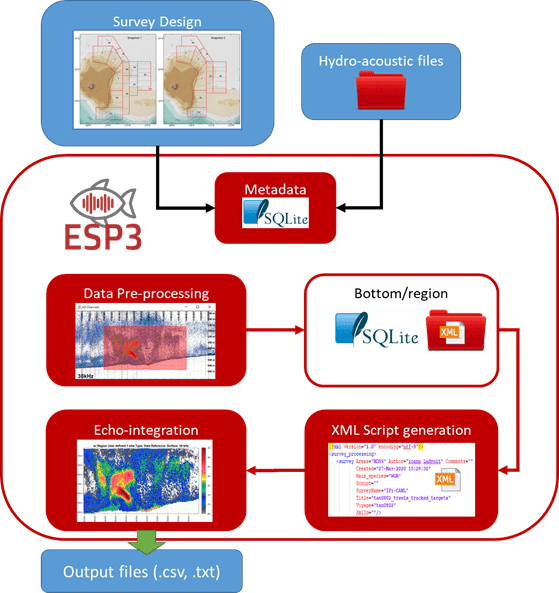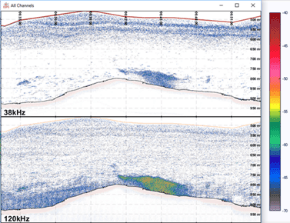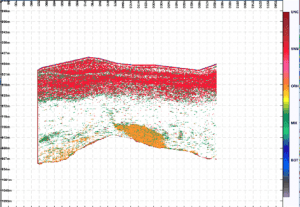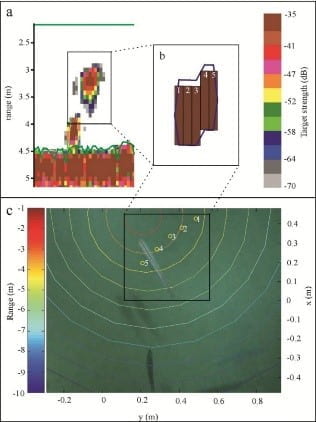One of the challenges associated with using acoustic technologies to inform fisheries management is getting through the large datasets with efficiency and reproducibility. To address this challenge, researchers designed open-source software, ESP3, to process large hydroacoustic datasets.[1]
The software can be used to process data generated by active acoustic technologies such as echosounders that send out sound pulses underwater and measure the echo response (backscatter) to identify the organisms or structures in the area. ESP3 can be applied to echosounder data to inform biomass estimates, large-scale studies of marine ecosystems and marine geophysical applications. There is flexibility – parameters and algorithms can be changed and multiple different datasets can be integrated. The user needs to make decisions around these parameters to design a robust workflow that will then apply automated methods to do the quantitative analysis of the echo.
To date, ESP3 is the only open-source software with a graphical interface to support processing of acoustic datasets. The open-source nature of the software is a key strength as it both guarantees transparency in the analysis pipeline and also opens up access to those groups that have been prohibited by cost. The user interface also opens up accessibility as it allows people who don’t have coding expertise to scrutinise and process acoustic data.

Standard workflow for hydroacoustic data analysis using ESP3.
To date, ESP3 is the only open-source software with a graphical interface to support processing of acoustic datasets. The open-source nature of the software is a key strength as it both guarantees transparency in the analysis pipeline and also opens up access to those groups that have been prohibited by cost.
NIWA uses ESP3 to process all the hydroacoustic data captured from their fisheries acoustics surveys, supporting a broad range of research in fisheries, ecology and geophysics. There was clearly a demand for such software elsewhere as well, as it has been downloaded more than 1,600 times from 63 countries since it was first released in 2017. The researchers who developed the software have trained numerous people from around the world on how to use it, provided assistance to others, and take on board suggestions from users to improve the software and add functionality.
Developing open-source software to streamline the process of analysing acoustic data has facilitated the use of acoustic technology in Aotearoa New Zealand’s fisheries management system, such as in the survey of hoki in Raukawa Moana Cook Strait that fed into the stock assessment.[2] The open-source software also supported increased uptake and use of acoustic datasets worldwide. Streamlined, open-source analytical tools such as ESP3 will play a crucial role in the future of sustainable fisheries management as we continue to increase our reliance on large datasets and recurring collection to inform management decisions in real time.


Example of species classification of orange roughy based on data collected by CSIRO during the AEX1701 voyage to Graveyard Hill (Chatham Rise). The top panel shows the data acquired at both frequencies. The bottom panel shows the results of the automated classification. The orange colour represents signal attributed to orange roughy.

In situ target strength measurements from a visually verified southern blue whiting using an AOS. Figure shows: a) raw ping echogram; b) the single target detection; and c) the equivalent image on the AOS analysis software.
References and footnotes
[1] Ladroit, Y. et al. (2020) ESP3: An open-source software for the quantitative processing of hydro-acoustic data, SoftwareX, 12, p. 100581.
[2] Ministry for Primary Industries (2018) Acoustic survey of spawning hoki in Cook Strait, New Zealand Fisheries Assessment Report 2018/12, p. 39.
